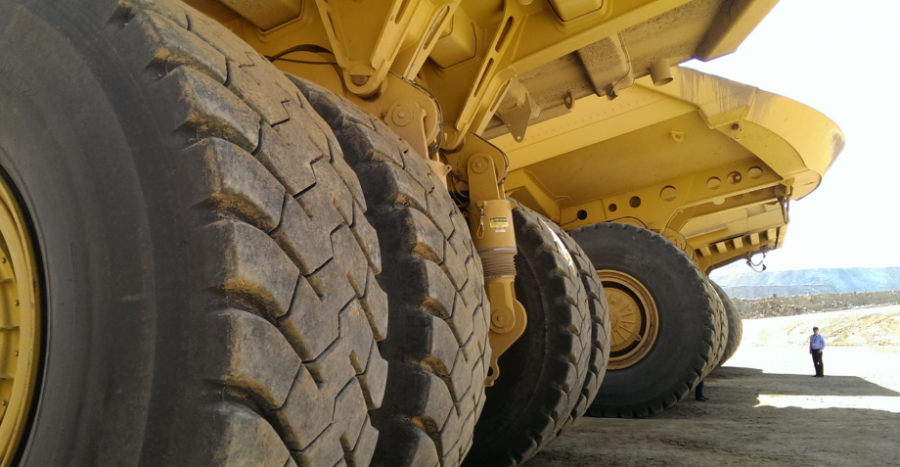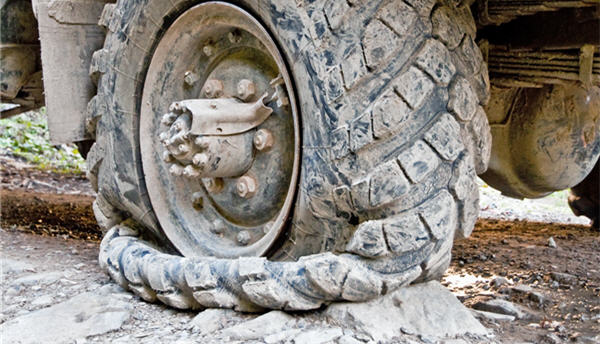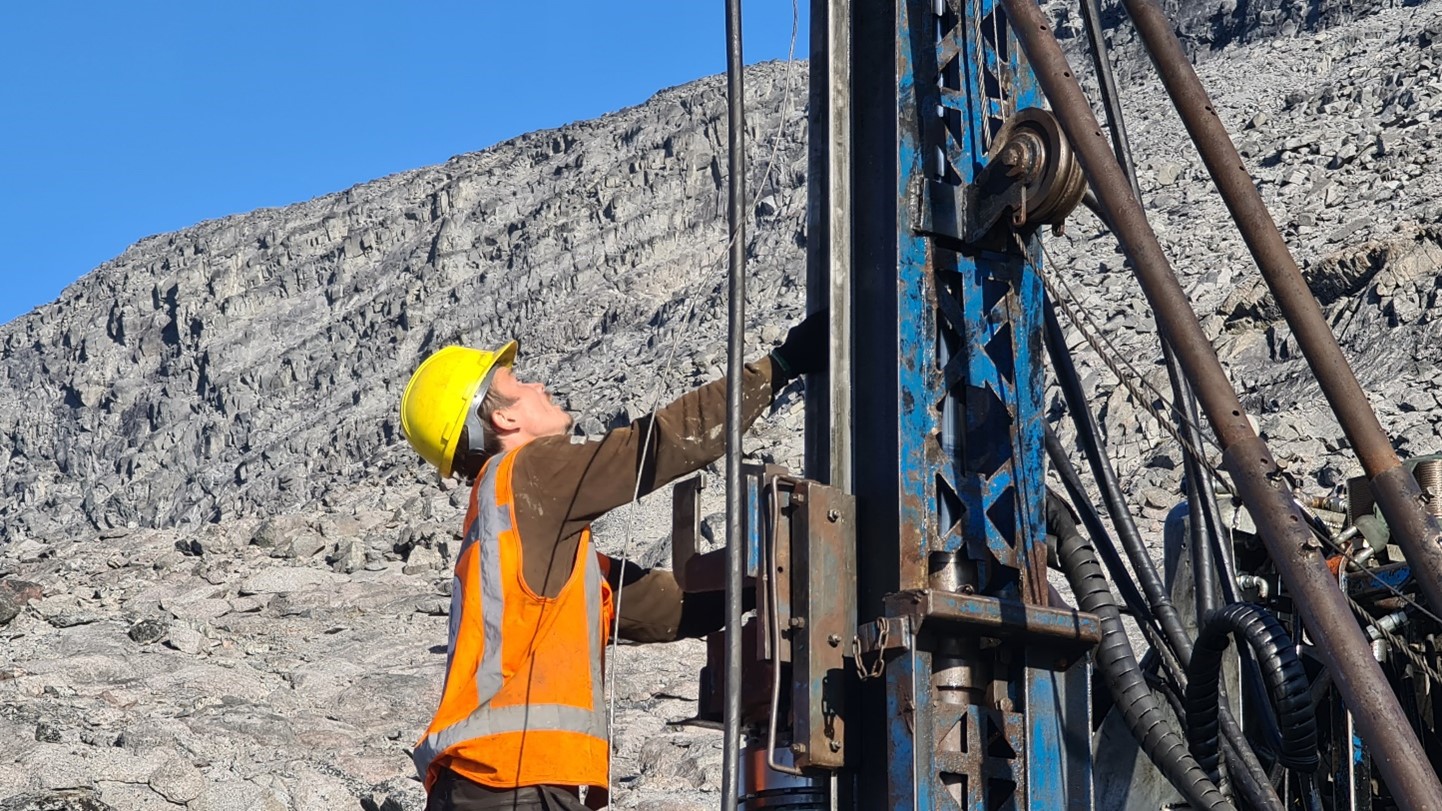Customer-centric innovation model a big win for tire supplier

For most people who follow the mining and mining equipment industry, haul trucks are one of the most interesting and awe-inspiring pieces of machinery – just for their sheer size and payload capacity. Walk into any open-pit mine or quarry, and these gargantuan pit monsters appear to be straight out of some dystopian future, where the machines have taken over and humans are scaled down to minor players in a giant game of earthmoving – with even the tallest barely reaching the centre of a mining truck tire’s hubcap.
Given the loads that the largest mining trucks are capable of moving, upwards of 400-500 tonnes in offerings by Caterpillar, Terex, Liebherr, Belaz and Komatsu, it’s no surprise that the tires on which these dirt beasts rest must provide as strong a base as possible in order to prevent punctures and expensive, time-consuming interruptions for tire changes and repairs.
“It’s very important from the operation’s point of view that the customer gets a supplier which he can rely on, which is going to do his utmost to get the longest life on the tire itself, to see the absolute best utilization and performance of the tire”: Peter Nilsson, innovation and R&D manager with Kal Tire
With material haulage comprising roughly 50% of a mining operation’s costs, it’s also not a shock to learn that tire replacement is an expensive endeavour, with a single new mining truck tire selling for north of US$40,000. At all mines, production is king, and frequent breakdowns cannot be allowed to happen. For the mine operator, that means having a good tire maintenance program, as well as parts and service available at the site – to minimize downtime.
“It’s very important from the operation’s point of view that the customer gets a supplier which he can rely on, which is going to do his utmost to get the longest life on the tire itself, to see the absolute best utilization and performance of the tire,” says Peter Nilsson, innovation and R&D manager with Kal Tire. Through its Mining Tire Group, the Vernon, B.C.-based company has tire sales and service contracts with 17 countries including Canada, Mexico, and nations in Europe and Latin America.
According to Nilsson, there’s a lot that a tire supplier can do to help mines extend tire life. This includes working with the mine to ensure that haulage roads are properly maintained, including the removal of large rocks and debris that can easily puncture a tire. Potholes should be filled and the roads should be calibrated to ensure even tire wear. “This is a big link in the chain in order to extend the tire life,” says Nilsson.
Another big factor on tire life is how the truck is being operated. While productivity is paramount, haul trucks should be driven at an optimal speed; driving faster may deliver more tonnes to the transfer point, but it also heightens tire wear. “There’s a balance you have to take in terms of the operation and how you guide the operators in how to drive that truck,” Nilsson said.
The way the truck is loaded is also important. Operators need to take care that the load is balanced, otherwise the tires could wear more on one side than the other.
If a tire does puncture, there are a few options available to the mine. The least expensive of course is to repair it, which can be tricky if the damage happens in the pit. Another possibility is to retread the tire, a mid-range cost option that can also extend tire life. If either of these options aren’t feasible, the mine will have to go the most expensive route of replacing the tire. Most mines have appropriate equipment at the site and employees who are trained in tire repairs and replacement.
While tire sales and service – both mining tires and commercial tires – are the bread and butter of Kal Tire’s business, Nilsson said the 60-year-old company is also working closely with its mining partners and asking its customers for feedback as to how it can expand into other areas and become more innovative.

Tire punctures can mean costly interruptions for mine operators. Most mines have equipment and staff on site to repair, retread or replace damaged haul truck tires.
A good example is the Innovation Centre set up in 2015 at company headquarters in Vernon. Comprising four truck bays with electrical and pneumatic outlets, the Innovation Centre is a way for Kal Tire to develop new tools and processes to enhance customer productivity and safety in the field.
“We are generating ideas from the operations on a regular basis which we then evaluate and see how we can start these ideas,” says Nilsson. Examples include:
- a ram mount tool that securely holds the ram in place when breaking the bead. The tool was designed for Caterpillar 797 and Komatsu 930E mining trucks;
- a remote-controlled service trolley developed to improve operations when using ram mount tools or bead breakers;
- a tire deflator tool designed to significantly reduce earthmover tire deflation time.
Improvements to service contracts, generated from customer feedback or from within, are seen as a way for Kal Tire to be more innovative in its approach to servicing.
Nilsson said Kal Tire has five projects happening concurrently at the Innovation Centre. “We’ll develop it here, engineer it and certify it before goes out in the field, and then run a field test for three months. We’ll get photos, videos, reports and then if it’s a success it’ll be available to the entire Mining Tire Group,” he said.
Kal Tire’s Mining Tire Group and the University of British Columbia have also formed a research partnership that will allow the two organizations to collaborate in developing technology and solutions for the mining tire industry.
In a 2016 memorandum of understanding (MOU), both parties agreed to pursue research and innovation as part of a partnership that matches expertise from UBC Okanagan’s School of Engineering with the innovation goals of Kal Tire’s Mining Tire Group.
The MOU lays out an initial three-year term of collaboration on mutually beneficial areas of research. The projects may include everything from robotics and metallurgical design to environmentally-responsible ways to use recycled tire crumb.
Nilsson said in today’s competitive mining supplier marketplace, it’s incumbent upon companies like Kal Tire to not only maintain existing sales and service contracts at high standards, but also to be constantly thinking “outside the box” for forward-thinking solutions to customer challenges.
“Customers are looking for products or solutions that will solve their problems and make their life easier, so customers’ expectations will continue to drive innovation,” he said. “The theme now is that companies need to innovate no matter what business they’re in and I’m happy to see that we are now part of the innovation and we can continue to drive this in our future.”
{{ commodity.name }}
{{ post.title }}
{{ post.date }}




Comments